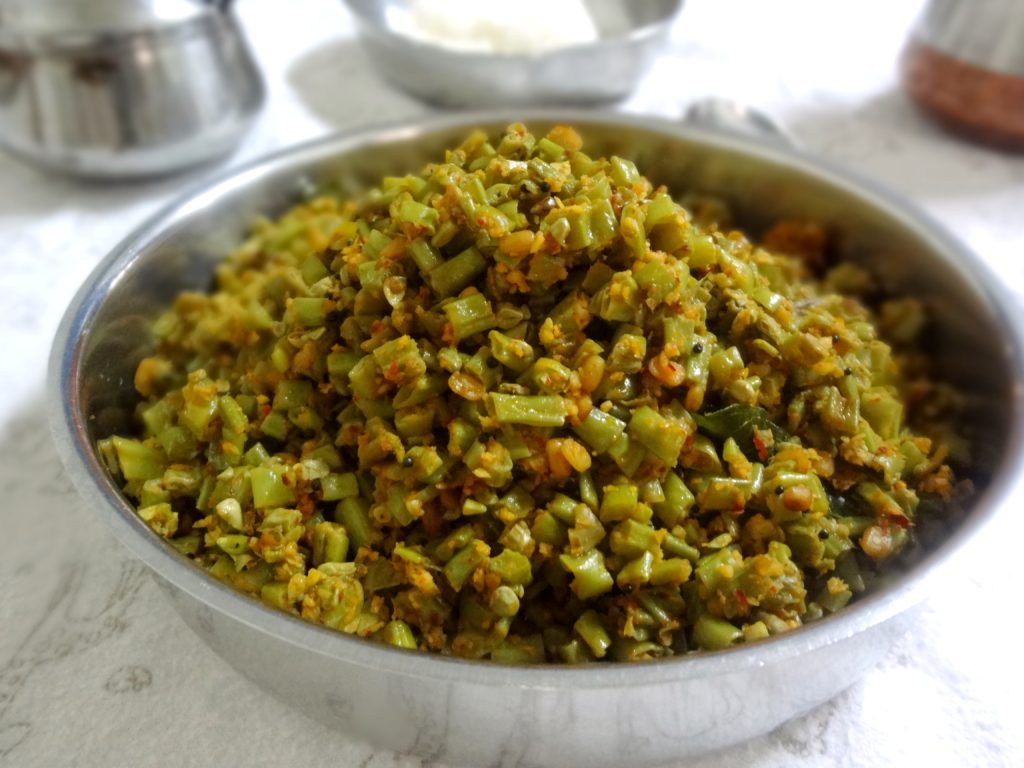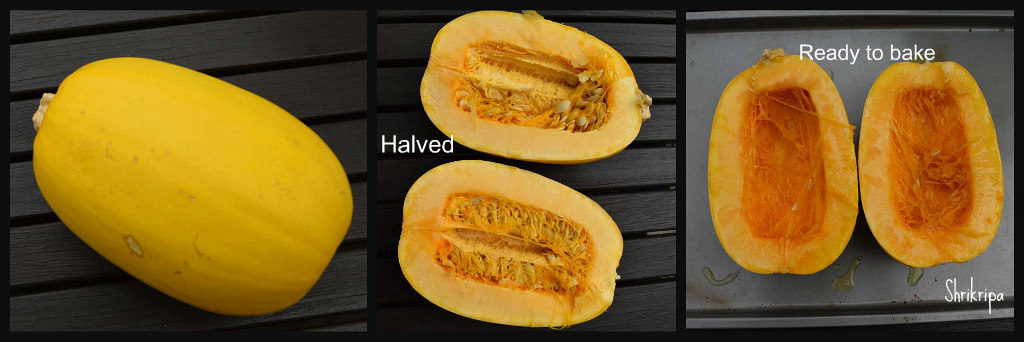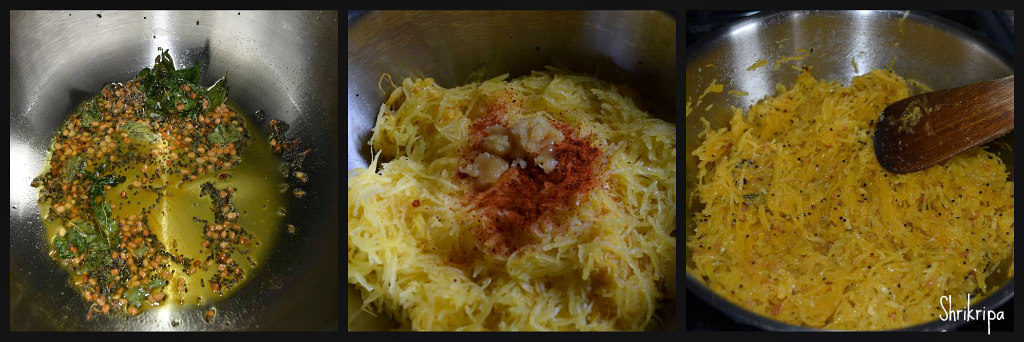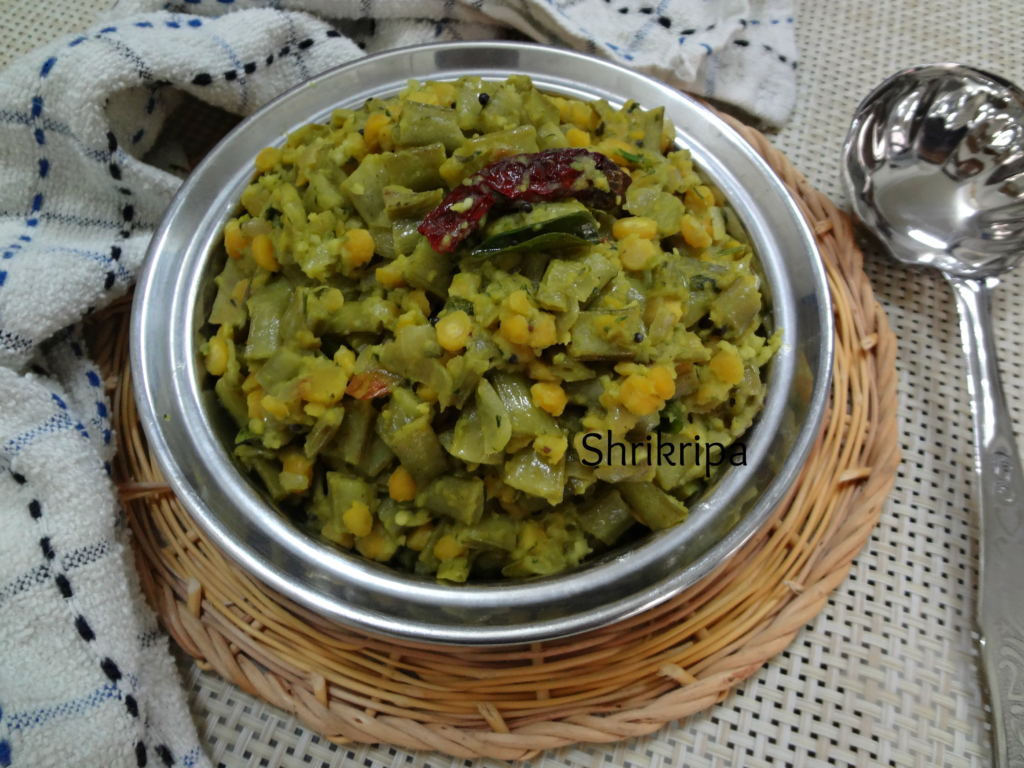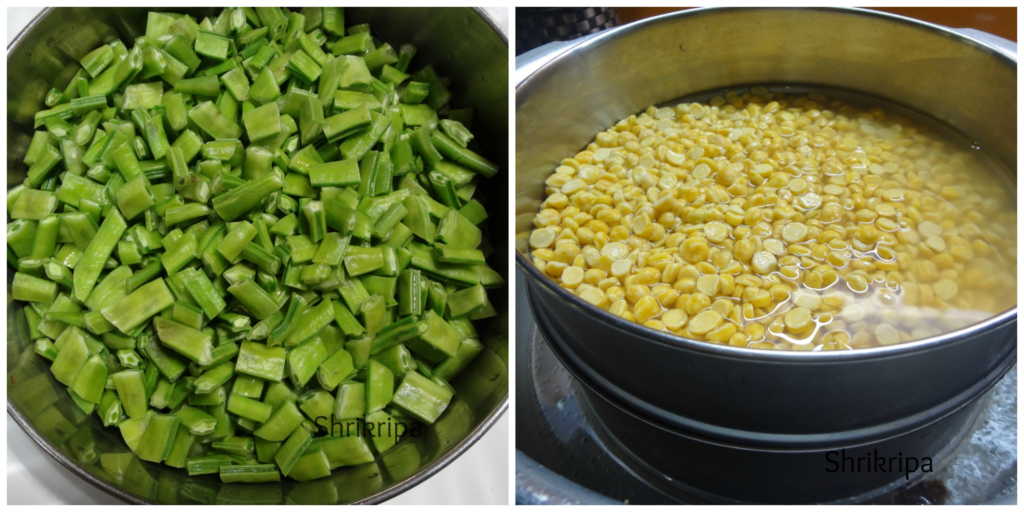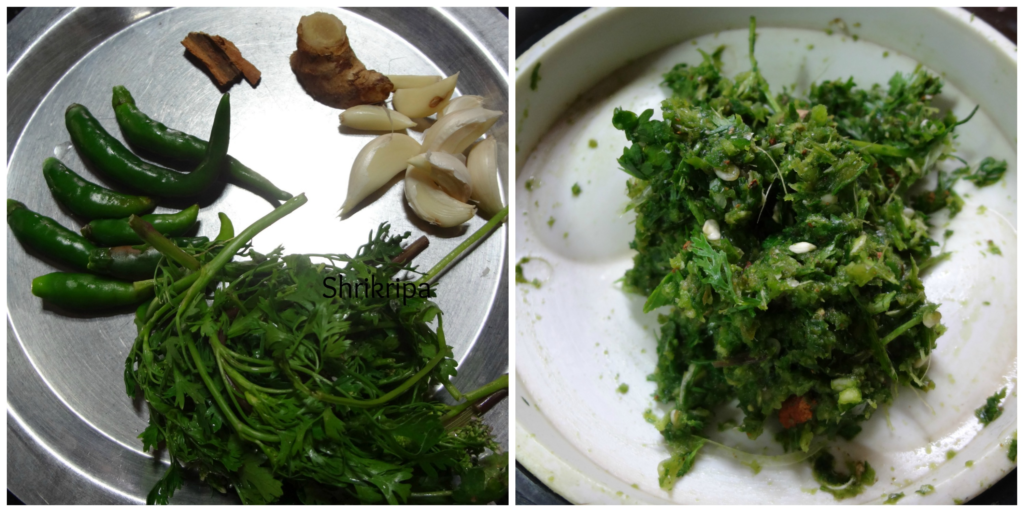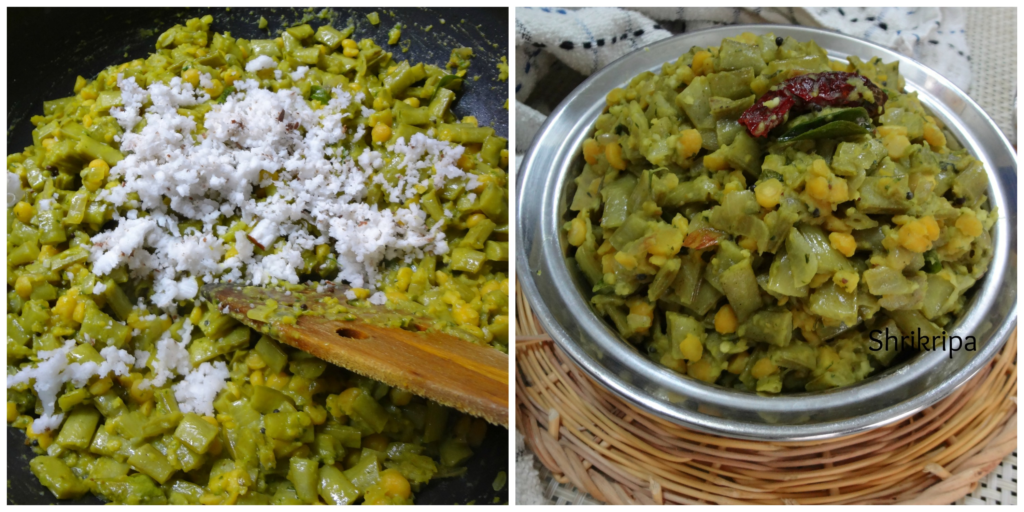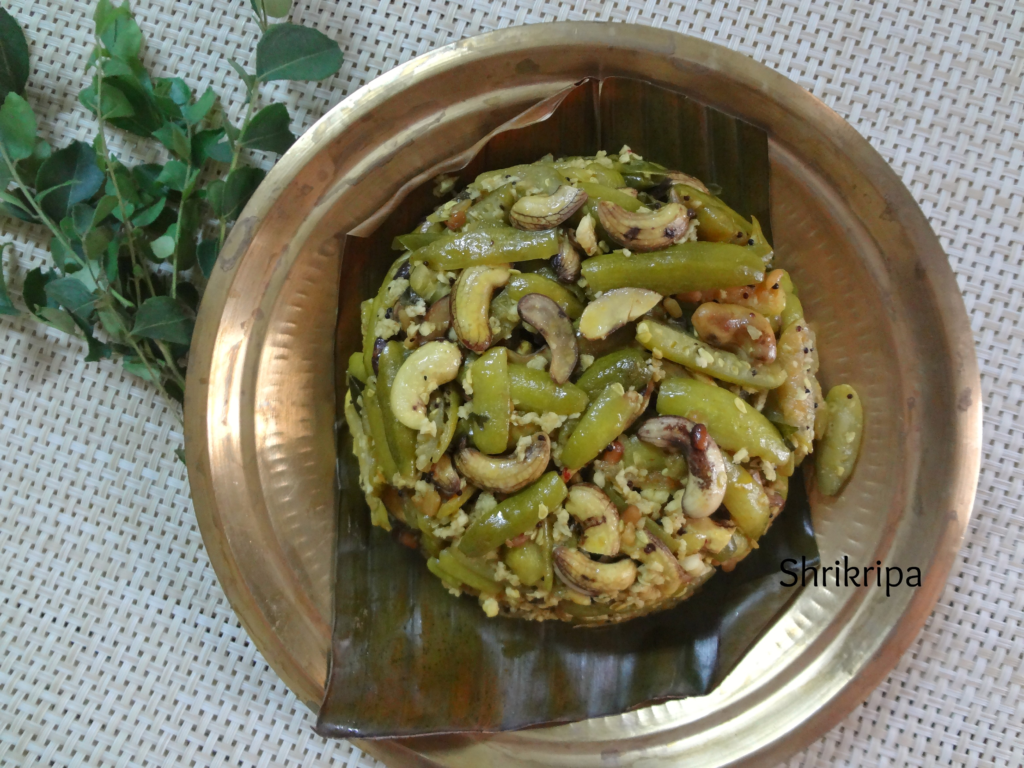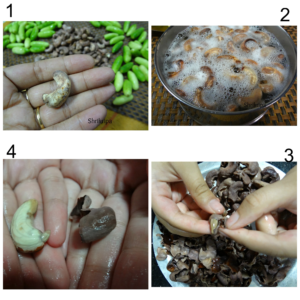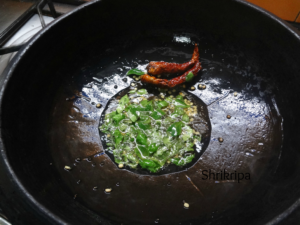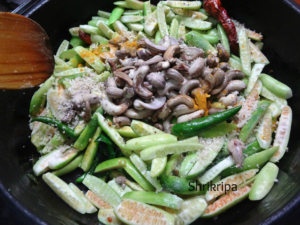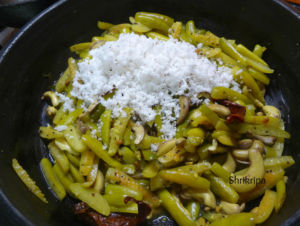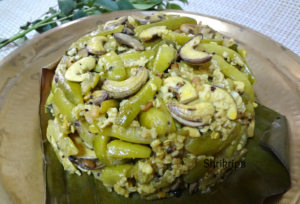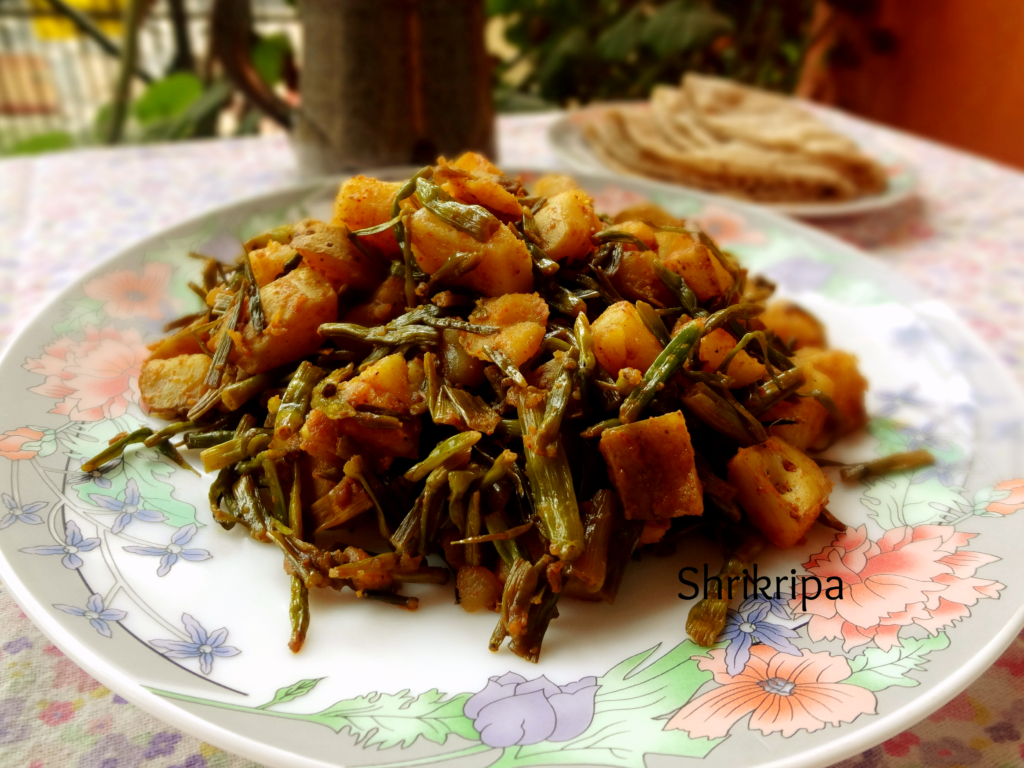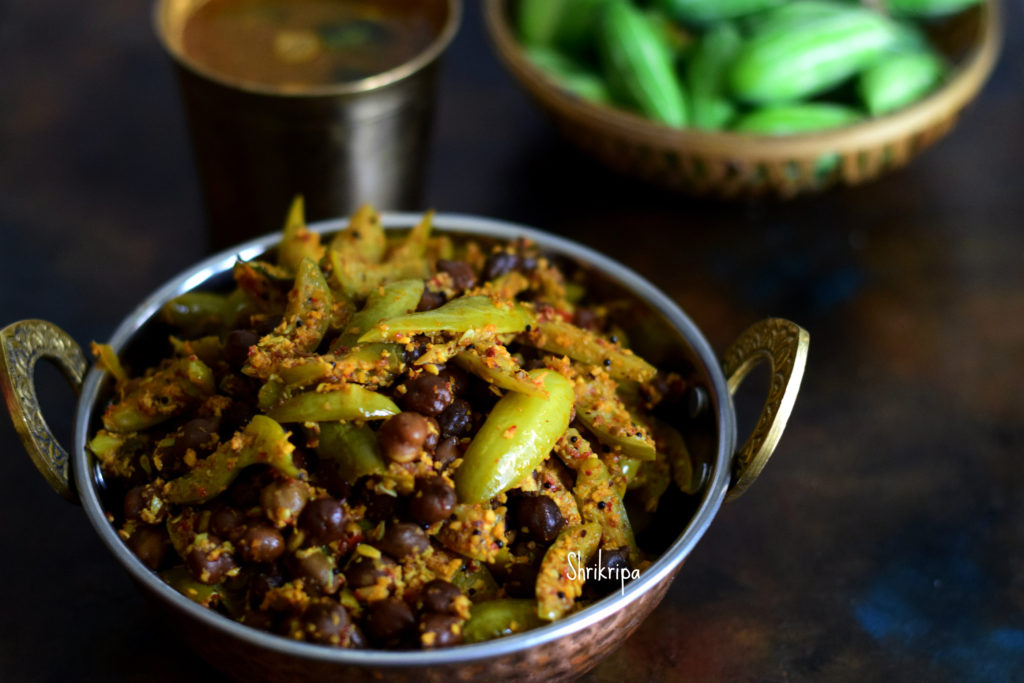It is a very tasty vegetable and is known as Chikdikayi, chapparadavare or Indian broad beans. This subzi/dry curry is one of our favourite and whoever tastes this subzi, usually asks for the recipe. So, I thought of sharing this recipe in my blog as well. I learnt this from our family friend who hails from Gulbarga, Northern part of Karnataka.

How it is made –
Ingredients:
Indian broad beans – 500 Gms
Garlic – 10 -12 cloves
Red chilli powder – 1 to 2 tsp.
Salt
Crushed roasted groundnut – ½ cup
Oil- 2 tbl sp.
Method:
-Remove both side’s fibre and slit open, to see. Slit at the centre and keep aside.
-Now keep one pot of water for boiling, add little salt to it. When it starts boiling, add broad beans including bean as well.
-When it changes colour, drain the water and keep aside.

– Keep one thick bottomed kadai, put oil. When oil becomes hot, add crushed garlic and fry a little. Now add cooked and drained beans.
-Add sufficient amount of salt and red chilli powder and mix nicely. Cook until oil leaves from the sides.
-Now add crushed or roughly powdered ground nut and mix for a while.
-Serve with Chapati/phulka’s or rice.
Note: I usually add ready ground nut chutney powder (which has red chilli powder, salt and garlic)
If you are using chutney powder like me, decrease the amount of salt and red chilli powder while adding at the beginning.

